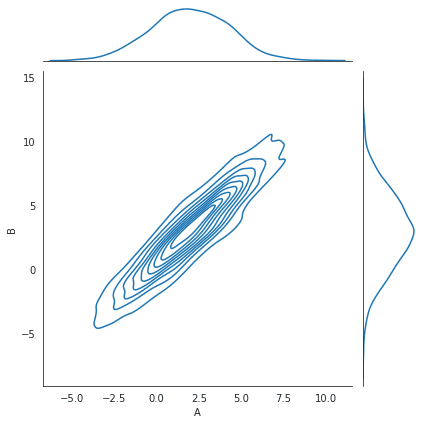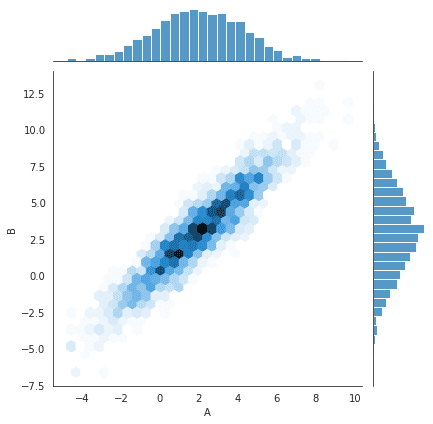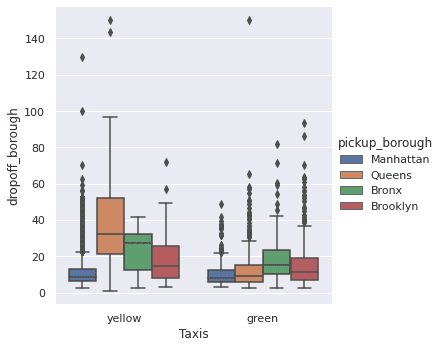Seaborn library has matplotlib at its core for data point visualizations. This library gives highly statistical informative graphics functionality to Seaborn.
Basic plots with Seaborn

Table of Contents
Matplotlib is at the heart of Seaborn Library’s data point visualizations. This library gives highly statistically informative graphics functionality to Seaborn.
Installation
Following are short instructions for installing seaborn.
# command prompt
pip install seaborn
# jupyter lab / collab
!pip install seabornYou can use these commands on the command prompt. Use the same command on Jupyter or Collab in the code cell.
Importing
While importing Seaborn, you should also import the Matplotlib and pyplot objects for visualizing the plots. In the following image, we import seaborn, numpy, and pandas for visualizations, mathematical functions, and dataset handling.
import pandas as pd
import numpy as np
import seaborn as sns
import matplotlib.pyplot as pltKDE plots with Distribution Densities
KDE plots are used to show the data distribution. In the following code, we use artificially produced data to plot with KDE.
Distplot
Distplot can help with observing histograms with trend lines. Distplot is useful for studying continuous data.
sns.set(rc={'figure.figsize':(11.7,8.27)})
sns.distplot(data['A']);
sns.distplot(data['B']);
KDE plot 2D
We can also plot the data with KDE with a 2-factor distribution plot.
sns.kdeplot(x=data['A'], y=data['B'])
with sns.axes_style('white'):
sns.jointplot("A", "B", data, kind='kde');
with sns.axes_style('white'):
sns.jointplot("A", "B", data, kind="hex")
Pairplot
Let’s use the planets dataset from Seaborn Library for rendering multiple plots in a single image. Using pair plots will help in understanding paired relations among multiple variables.
planets = sns.load_dataset("planets")
planets.head()| method | number | orbital period | mass | distance | year | |
|---|---|---|---|---|---|---|
| Radial Velocity | 1 | 269.300 | 7.10 | 77.40 | 2006 | |
| Radial Velocity | 1 | 874.774 | 2.21 | 56.95 | 2008 | |
| Radial Velocity | 1 | 763.000 | 2.60 | 19.84 | 2011 | |
| Radial Velocity | 1 | 326.030 | 19.40 | 110.62 | 2007 | |
| Radial Velocity | 1 | 516.220 | 10.50 | 119.47 | 2009 |
sns.pairplot(planets, hue='year', size=2.5);
Jointplot
In a joint plot, we get a bivariate graph and two separate graphs placed on their respective axis to show each variable’s distribution plotted with histograms.
In total, you get three graphs,
- one that shows the relationship between variables
- Other two represent variables individually.
aplanets=sns.load_dataset('geyser')
sns.jointplot("duration", "waiting", data=planets, kind='reg')
kind parameter
We can change the kind parameter and use different arguments in the joint plot. To show an example, we will use the ‘hex’ argument with kind.
geyser=sns.load_dataset('geyser')
with sns.axes_style('white'):
sns.jointplot("duration", "waiting", data=geyser, kind='hex')
Factor Plot
For factor plots, we will use the taxis dataset, which has multivariate data and also has several data types. This dataset was originally published by the NYC Taxi and Limousine Commission (TLC)
taxis = sns.load_dataset('taxis')
taxis.head(5)| Pickup | Drop-Off | Passengers | Distance | Fare | Tip | Tolls | Total | Color | Payment | Pickup_Zone | Dropoff_Zone | Pickup_Borough | dropoff_borough |
|---|---|---|---|---|---|---|---|---|---|---|---|---|---|
| 3/23/2019 20:21 | 3/23/2019 20:27 | 1 | 1.6 | 7 | 2.15 | 0 | 12.95 | yellow | credit card | Lenox Hill West | UN/Turtle Bay South | Manhattan | Manhattan |
| 3/4/2019 16:11 | 3/4/2019 16:19 | 1 | 0.79 | 5 | 0 | 0 | 9.3 | yellow | cash | Upper West Side South | Upper West Side South | Manhattan | Manhattan |
| 3/27/2019 17:53 | 3/27/2019 18:00 | 1 | 1.37 | 7.5 | 2.36 | 0 | 14.16 | yellow | credit card | Alphabet City | West Village | Manhattan | Manhattan |
| 3/10/2019 01:23 | 3/10/2019 01:49 | 1 | 7.7 | 27 | 6.15 | 0 | 36.95 | yellow | credit card | Hudson Sq | Yorkville West | Manhattan | Manhattan |
| 3/30/2019 13:27 | 3/30/2019 13:37 | 3 | 2.16 | 9 | 1.1 | 0 | 13.4 | yellow | credit card | Midtown East | Yorkville West | Manhattan | Manhattan |
with sns.axes_style(style='ticks'):
g=sns.set(rc={'figure.figsize':(11.7,8.27)})
g = sns.factorplot("color", "fare", "pickup_borough", data=taxis, kind="box")
g.set_axis_labels("Taxis", "dropoff_borough");

Time Series Analysis
To understand time series analysis, we are using the worldwide life expectancy dataset. The first plot shows the world GDP over the years and its increase.
lifeexp=sns.load_dataset('healthexp')
lifeexp.head(1)| Year | Country | Spending Usd | Life Expectancy |
|---|---|---|---|
| 1970 | Germany | 252.311 | 70.6 |
with sns.axes_style('white'):
g = sns.factorplot(x="Year",y="Spending_USD" ,data=lifeexp,aspect=4.0,)
g.set_xticklabels(step=5)
with sns.axes_style('white'):
g = sns.factorplot(x="Year",y="Life_Expectancy" ,data=lifeexp ,aspect=2.0,)
g.set_xticklabels(step=5)
ANCOVA: Analysis of Covariance with python
ANCOVA is an extension of ANOVA (Analysis of Variance) that combines blocks of regression analysis and ANOVA. Which makes it Analysis of Covariance.
Learn Python The Fun Way
What if we learn topics in a desirable way!! What if we learn to write Python codes from gamers data !!
Meet the most efficient and intelligent AI assistant : NotebookLM
Start using NotebookLM today and embark on a smarter, more efficient learning journey!
Break the ice
This can be a super guide for you to start and excel in your data science career.
Model Context Protocol (MCP) — the “USB” for AI tools
MCP is the USB port for AI — A standard that lets models like ChatGPT safely connect to tools and servic
Manova Quiz
Solve this quiz for testing Manova Basics
Quiz on Group By
Test your knowledge on pandas groupby with this quiz
Visualization Quiz
Observe the dataset and try to solve the Visualization quiz on it
Versions of ANCOVA (Analysis Of Covariance) with python
To perform ANCOVA (Analysis of Covariance) with a dataset that includes multiple types of variables, you’ll need to ensure your dependent variable is continuous, and you can include categorical variables as factors. Below is an example using the statsmodels library in Python: Mock Dataset Let’s create a dataset with a mix of variable types: Performing…
Python Variables
How useful was this post? Click on a star to rate it! Submit Rating
A/B Testing Quiz
Complete the code by dragging and dropping the correct functions
Python Functions
Python functions are a vital concept in programming which enables you to group and define a collection of instructions. This makes your code more organized, modular, and easier to understand and maintain. Defining a Function: In Python, you can define a function via the def keyword, followed by the function name, any parameters wrapped in parentheses,…
Python Indexing: A Guide for Data Science Beginners
Mastering indexing will significantly boost your data manipulation and analysis skills, a crucial step in your data science journey.
One response to “Basic plots with Seaborn”
[…] Seaborn is a Python data visualization library based on Matplotlib. See how to use basic plots with seaborn here. […]
Points You Earned



Leave a Reply
You must be logged in to post a comment.